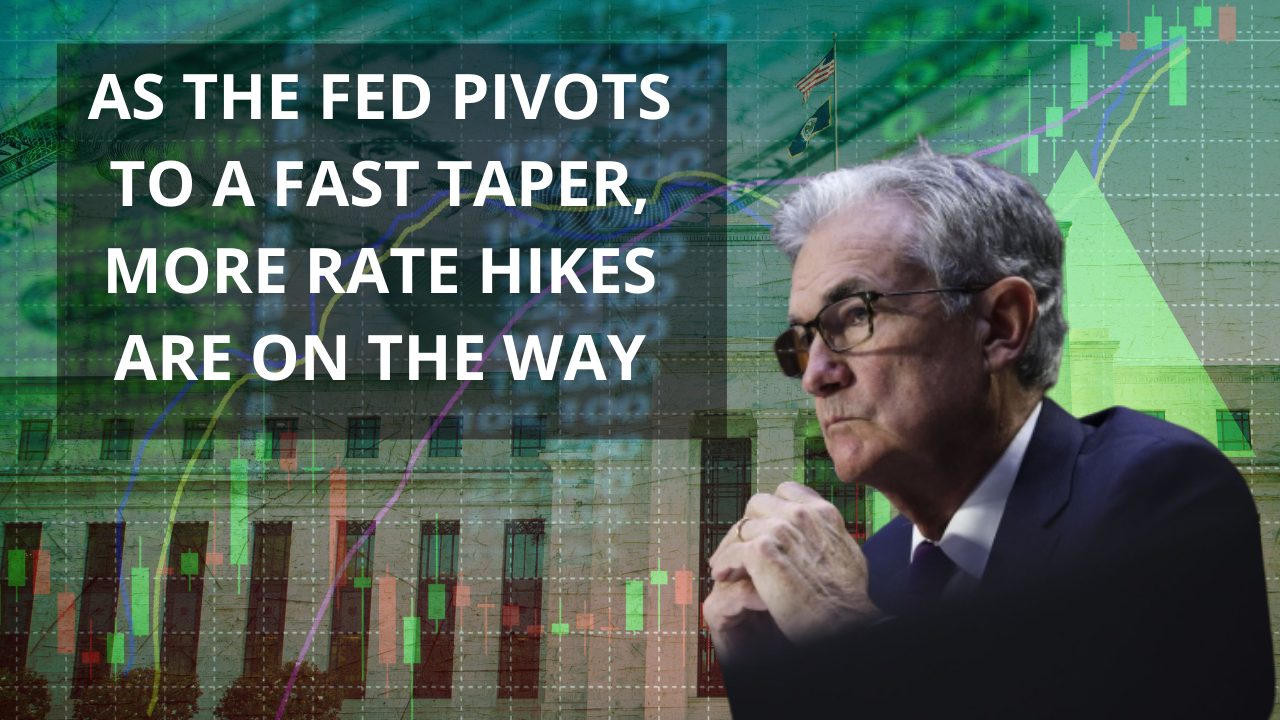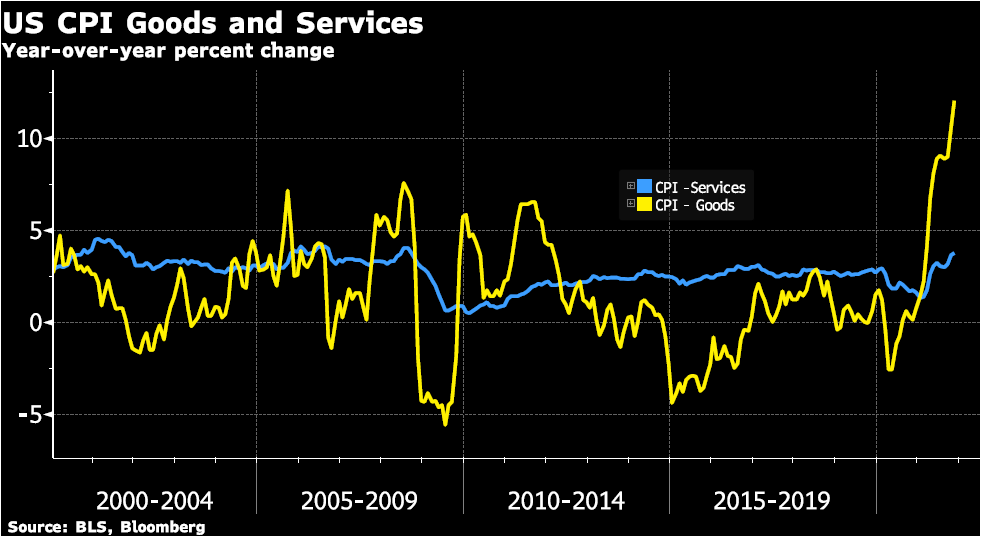by GoldCore

As the Fed Pivots to a Fast Taper, More Rate Hikes are on the Way
This month’s highly anticipated Federal Reserve meeting announced that the Fed is speeding up the tapering of its asset purchases to US$30 billion per month.
This means that instead of adding US$120 billion to its balance sheet each month, the Fed will be adding US$60 billion.
The Fed also said in its statement that
The Committee judges that similar reductions in the pace of net asset purchases will likely be appropriate each month, but it is prepared to adjust the pace of purchases if warranted by changes in the economic outlook.
Based on this statement, if the Fed follows through at the ‘same reduction pace’ the asset purchases will stop after two more meetings, which would put the end of asset purchases in March 2022.
It is important to point out that, yes, the Fed is slowing its asset purchases, but it is still purchasing US$40 billion in US Treasury Securities and $20 billion in Mortgage-backed securities per month.
These continued purchases are on top of the already $1.74 trillion (yes, trillion with a T) assets the Fed has added to its balance sheet since July 2020; and the $7.75 trillion added over the last 13 years.
Fed pivots toward tackling inflation
‘The Fed pivot’ towards the high inflation numbers – US CPI inflation was 6.7% in November. Being more permanent than the transitory nature the Fed had previously anticipated are the catalyst to the faster taper schedule.
The FOMC (Federal Open Market Committee, which is the Fed’s monetary policy committee) participants’ updated projections show that they now expect PCE (Personal Consumption Expenditure) inflation to average around 2.6% in 2022. Also 2.3% in 2023, up from their September estimates of 2.2% for both years.
This has in turn increased their outlook for the Federal Funds Rate (the Fed’s policy interest rate). The FOMC now expects the Fed Funds Rate to increase to 0.8% in 2022 and to 1.6% in 2023 (the current rate is .25%).
But the surprise in the Fed’s projections is that they only raise their projection of Real GDP growth to 4.0% from 3.8% in 2022, and then decreased their projection of Real GDP growth in 2023 from 2.5% to 2.2%.
However, in the Fed’s statement and reiterated by Chair Powell in his press conference there were caveats to this outlook.
At the top of the list is the effect of the Omicron variant on the economy. With renewed lockdown restrictions in the US could slow the economy again.
The second caveat is that if labour force strength, especially for the lowest wage earners, is weaker than the Fed would like, it could put interest rate increases on hold.
A deeper look at inflation shows the inflation increase has been driven by goods inflation.
During Covid-lockdowns, many services were not easily available, such as dining in restaurants and travel, so consumers turned to purchasing goods instead.
Don’t forget that the US government put upwards of US$850 billion into household’s bank accounts in 2020 and early 2021 which added to consumer spending.
Some components of the high inflation numbers, i.e. energy (up 33%) and used cars (up 31%), should moderate in 2022 as the Fed now expects.
There is a major component that has not accounted for in the high inflation numbers yet – the rising housing prices.
Soaring Housing Prices
In the CPI calculation, house prices are not directly incorporated but fall under the category in services of ‘shelter’, which is based on a cryptic calculation described as rents and owners’ equivalent rent of residences.
The issue is that equivalent rent of residences is an estimated number that seriously lags house prices. This means when this component catches up it will rise considerably.
This is based on the latest CPI release shows that shelter only rose 3.8% in November compared to year earlier. This is when the latest readings on house price are showing increases of above 20% compared to a year earlier.
Also, not directly in CPI, but will feed into CPI on a lagged basis are wage increases. These are also increasing and are expected to increase further as employers offer incentives to attract desperately needed workers.
We remind the reader that the Fed, and other Central banks want some inflation – See our post “Why Do Central Banks Want Higher Inflation?” from October 21.
Although the Fed has now come around to the notion that inflation is ‘more permanent than temporary’ they are likely going to stay behind the inflation curve. This means that real rates will remain negative.
Bottom line for gold and silver is even by the Fed’s own calculations in this latest release real interest rates are expected to stay negative for the coming years.
And inflation readings are likely to increase further before they start to decline back due to the lag in calculations. This means pushing real rates even further negative. And negative real rates are a very good environment for gold and silver to rise!

